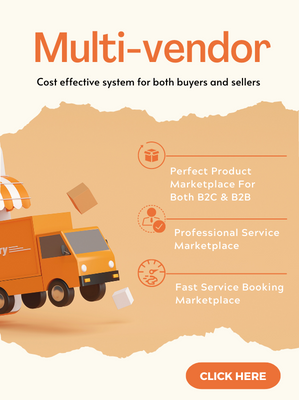In a dynamic world of selling online, you’ll need to readjust your budget quite often, much more often than once per year like a lot of companies do. This article will show how to allocate your e-commerce marketing budget for retailers running smaller websites — those with less than 500K monthly visitors. If your traffic exceeds that threshold, it’s likely because you have already learned the basics of marketing budget allocation.
Let’s start this section by helping you avoid one of these 2 common mistakes of new customer acquisition budget allocation:
1. Never put all of your eggs in one basket.
It’s easy to calculate customer acquisition cost for a certain acquisition channel so it’s very easy to figure out which channel is cheapest in terms of CAC(customer acquisition cost) and invest all of your money into that channel. That is extremely risky. If something happens to that channel you are in a big problem.
For example, if one was investing all of their marketing budget in advertising on a certain platform, what happens to their business if the platform loses an audience? What if the platform changes rules and you’re no longer able to advertise there? What if the CAC on that platform skyrockets and you can no longer afford advertising on it?
Another example would be companies relying 100% on SEO and organic traffic from search engines. If one invests all of their budgets over there what happens if Google’s next change of algorithm knocks you out of page one? Sometimes Google even introduces new features into their result pages that can literally destroy entire industries and not just individual websites.
All of these situations would be very tricky for your business and this is why it’s not advisable allocating your eCommerce marketing budget to just one best-performing customer acquisition channel even though it makes more financial sense to do so, you need to consider risk management.

2. Misattribution
When people think of acquisition channels they usually calculate conversion using just one of the attribution models and that’s usually the last-click attribution. Different channels play role in conversion and you cannot observe the acquisition channel’s effectiveness through the last-click attribution model.
Even default Google Analytics offers a lot of options for different attribution model comparisons where you can see which role each channel plays depending on how you attribute conversions.
There’s so much written about attribution modeling by people far smarter and much more experienced in that field than me that googling it would open your eyes to a few hundred years worth of reading material. That’s why I won’t write a lot about this. I will, however, point you toward this article which has this amazing image that will open your eyes to how much misattribution happens when you’re attributing a sale to just one channel that brought you the last click before conversion:
SEO: 10-30 Percent
If marketing budgets are like personal finance allocation, then SEO is akin to Treasury bonds. In the short term, this channel won’t drive much in the way of results. But SEO should be viewed as a long-term source of stability — a savings nest. Content creation and other SEO strategies will bring in steady traffic just like bonds will payout dividends, and the returns will add up over time. SEO remains the foundation of gathering organic search traffic, and it should be a central component of any digital marketing budget. With SEO, you’re investing in optimized, original content and the keyword research behind it. All of this works to build organic traffic, which is a slow but necessary process for any site to go through.
Although SEO won’t drive quick ROI the way other campaigns might, the long-term benefits are critical for any retail brand. Unlike other channels where ROI benefits can be realized in a matter of days, SEO requires longer investment cycles before results are delivered. Therefore, you should expect to dedicate part of your budget to SEO activities every month — even when you’re worried it isn’t paying off. Initially, spend enough on your site to ensure it is using an “SEO-friendly” design; research your keywords carefully to ensure that they are properly represented on your site. After that, establish a monthly budget and spend on various SEO activities such as link building and original content production.
If you haven’t started investing in video, mobile, and retargeting, you should allocate close to 30 percent of your budget to SEO. As you diversify into other advertising channels, you will likely see your SEO allocation reduced to 10 percent.

Social Media: 10 to 20 Percent
The content you produced as part of your SEO strategy should now be distributed to as many qualified readers as possible. Unfortunately, the days of free social marketing are long gone. In order to get any form of traction out of Facebook or Twitter, you will need to spend money.
While most B2B solutions start with Facebook, Twitter, and LinkedIn, where ad networks are established and proven. eCommerce businesses with specialized and highly visual products will benefit from being active on Pinterest and Instagram. One word of advice, invest in social sharing tools like Buffer and Hootsuite, to make your life easier, and your campaigns more effective.
SEM: 20 to 40 Percent
Unlike other marketing channels, SEM can drive significant traffic to your site overnight. However, because of how Google structures its pricing model, search engine marketing is more cost-effective the more relevant your ads are to your target audience. This means that increased spending isn’t necessarily better — in fact, it might be counter-productive. The good news is that your SEO efforts will help optimize pay-per-click ads so that you get more for your buck.
Early on, you should start researching keywords and spend some money to uncover their value. You will also benefit from modifying your ad copy frequently in order to determine which ones generate good CTR. When establishing your keyword strategy, you should evaluate your competitors’ keyword strategy. One tool that can greatly help is SimilarWeb.com. Of course, poor performance from keyword ads can indicate that while Google likes your ads, your customers don’t. Therefore you should keep an eye on click-to conversion rate and adjust your creative, targeting, and landing pages if you aren’t hitting your goals. Keep in mind that in highly competitive markets, keywords can be extremely expensive, so you shouldn’t spend a lot on this channel before you perfected your conversion funnel.
Retargeting: 10 – 20 Percent
It’s a fact that most eCommerce sites are only converting 2% of their site visitors. This seems to suggest that 98% of your marketing budget is going to waste. Retargeting is a super powerful tactic to improve these numbers. Unlike a broad prospecting campaign, retargeting lets you focus and bring back to your site previous visitors that have not converted. When properly managed, retargeting offers considerable value and will deliver results that are as effective as search and email campaigns.
That being said, since the retargeting audience pool is based on site visitors, retailers won’t be able to scale their retargeting campaigns until they’ve built up sizable traffic to their site. Also, it is worthwhile to invest first in optimizing the site for conversions before throwing additional money to bring users back to a site that isn’t converting well.
Every site and its variables can be different, but a quick rule of thumb for pricing retargeting spend is as follows: multiply your site visitors by 10 and assume a CPM of $2.50, then divide this amount by 1,000 to figure out your expected budget. In other words, a site with 25,000 visitors will likely start with a monthly retargeting budget of about $625, while a site with one million visitors will spend about $25,000. But results and budgetary considerations can affect how much actual ad spend occurs, so these figures should only be used as a rough estimate.
We recommend waiting on retargeting until your website is getting at least 10,000 monthly visitors — until you reach this threshold, you won’t have enough site traffic to sustain a retargeting campaign. Until then, focus on increasing flow to your retail site, and on optimizing site conversions. Once you hit 25,000 in monthly visitors, you should ramp up your retargeting investment as much as possible since it is likely the lowest-hanging front as far as conversion optimization is concerned.
Prospecting Campaigns Using Display Ads: 5 – 25 Percent
Prospecting campaigns can be executed either with direct buys or programmatic channels by using a Demand Side Platform (DSP). There are positives and negatives to direct buying. The advantage is the guaranteed ad real estate you will purchase from a specific website. But because optimization opportunities are limited, the efficiency of this strategy is limited. Some spending is good for expanding brand awareness and reaching consumers through specific websites, but don’t spend more than 10 percent of your budget on this strategy early on. To get up and running quickly with Direct Buys, look into BuySellAds which provides a simple interface for executing campaigns on many premium sites. Programmatic, on the other hand, gives you access to Ad Exchanges where media buying is executed using a Real Time Bidding auctions. Programmatic media buys provide a more efficient method for buying ad placements but will require some investment in campaign management and optimization. As SearchEngineLand notes, programmatic buying offers great data insights that other campaigns can’t match. For that reason, it’s a very intuitive spending category.
Email Marketing: 5 – 10 Percent
Sure, email is an old method of marketing online, but it’s far from outdated. With consumers accessing email on mobile devices as well as traditional desktops, email has remained relevant even through rapid personal tech innovation. Newsletters and other email promotions have proven effective at driving site traffic and conversions, and email marketing solutions such as MailChimp make email both scalable and affordable. As an eCommerce site, you should consider how to leverage product recommendations in your emails. Whether it’s Cart Abandonment emails or Cross Sell opportunities, delivering the right product recommendation to the right user at the right time is critical in order to unlock this channel potential. Regardless, it’s hard to get a better bang for your buck so get your email marketing strategy in place as soon as possible.
Keep Budgets Fluid: Let Your Results Dictate Your Path Forward
As far as budget allocation goes, where your brand starts is not where it will end up. The commerce marketing budget needs of a new retail enterprise are completely different from an established brand. Moreover, industry-specific circumstances will determine whether your business is better served by one strategy over another. Understand your consumers and pay attention to the campaign dashboard. Don’t be afraid to invest heavily in one strategy or to scale down another if it doesn’t deliver results. As always in your eCommerce marketing budget, follow the “always be testing” mantra.
Magesolution are trying to stay ahead in the Magento community by updating every day about Magento news & tutorial. Let’s keep in touch with us and master Magento in the future!



